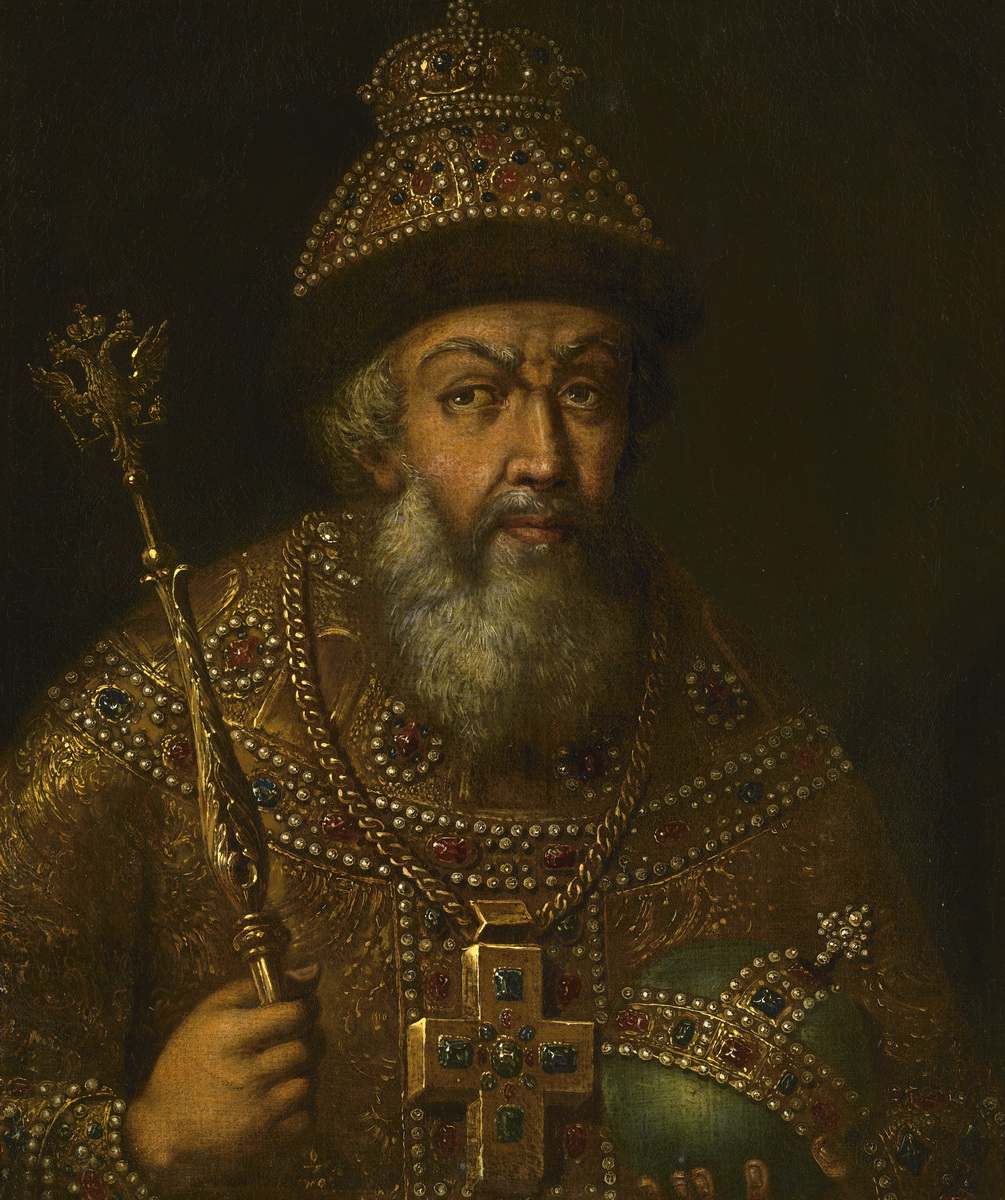


Царь Иван IV Васильевич (Грозный) (1530—1584) — сын Василия III и Елены Глинской. Венчан на царство в 1547 после непродолжительного регентства матери и правления бояр. Эта же дата считается началом образования Московского царства (1547—1721), когда Иоанн IV Васильевич во время коронации принял титул «царя Всея Руси». Таким образом, утверждал себя в качестве суверенного правителя и наследника византийских императоров (Иоанн был внуком Софии Палеолог, племянницы последнего императора Византии). Однако притязания великих московских князей на царский титул прослеживаются еще от Ивана III, когда из Византии были заимствованы многие ритуалы и символика. Примерно к тому же времени относится рождение концепции «Москва — третий Рим», утверждавшей мессианскую роль России в качестве главного оплота православия. В 1550-е провел ряд реформ при участии узкого круга приближенных лиц — Избранной рады. В это время был издан общерусский судебник, усовершенствована приказная система управления, создано постоянное войско стрельцов, созван Стоглавый собор (1551) для унификации церковных обрядов и решения вопросов канонизации, принято Уложение о службе, установившее обязанность для землевладельцев являться на войну «конно, людно и оружно». Осуществил ряд успешных походов по присоединению ханств - Казанского (1552) и Астраханского (1556), а также Башкирии (1557). Потерпел поражение в Ливонской войне за выход к Балтийскому морю (1558-1583). Из-за проводимой политики столкнулся с оппозиционными боярскими кругами, что привело к введению опричнины и политическим заговорам (1567 и 1569). Покровительствовал развитию культуры, церковному строительству и просвещению. «Грозным» Иван IV был прозван народом за казни политических изменников.
Портрет Ивана Грозного был написан примерно через полтора века после его смерти, преимущественно, с опорой на исторические и литературные описания. Таким образом, он представляет скорее воображаемый, нежели подлинный облик царя. Павел Климов. Каталог выставки в Малаге "Династия Романовых". 2017. С. 50/51.

Tsar Ivan IV (the Terrible) (1530–1584)
Ivan IV was the son of Grand Prince Vasily III, of the House of Rurik, and Elena Glinskaya, who came from a line of Lithuanian knights. He was crowned in 1547 as the first “Tsar of All the Russias”. With the participation of a narrow circle of close associates he carried out a number of reforms in the 1550s. At the first Zemsky Sobor (Assembly of the Land) in 1549 a law code for the whole of Russia, the Sudebnik, was adopted and a regular army of streltsy – people under arms who carried out permanent military service for pay – was established. The Stoglavy Sobor (Hundred Chapters Assembly) was summoned in 1551 to unify religious rites and deal with matters of canonisation. Ivan conducted successful campaigns to absorb the Khanates of Kazan (1552) and Astrakhan (1556), as well as Bashkiria (1557). He was defeated in the Livonian War to gain access to the Baltic (1558–1583). Clashes with boyar circles opposed to Ivan led to the formation in 1565 of the oprichnina (from the Old Russian oprich, meaning “special” or “apart”) when, after separating off part of the country and the troops under his own personal rule, the Tsar took extreme measures to crush the old boyar families so that power could be further centralised. Ivan supported the development of culture, the building of churches and enlightenment. According to various sources he had as many as seven wives. He was called “Terrible” (Grozny) by the people because of the savage executions of political opponents. Historiography has given him an extremely ambiguous evaluation.
The reign of the last of the Rurik dynasty, Feodor Ioannovich, the second son of Ivan IV by his first wife, Anastasia Romanovna Yuryeva-Zakharina, which began in 1584, saw the final unification of Western Siberia with Russia, the publishing of a new law code and the establishment of the Russian Patriarchate, both in 1589. During this period the internal political fighting worsened due to the rise within the court of the boyar Boris Godunov, whose sister the Tsar had married.
This portrait of Ivan the Terrible was painted roughly a century and a half after his death, and relies mainly on historical and literary descriptions. It is thus more an imagined, rather than a genuine, representation of the Tsar.



